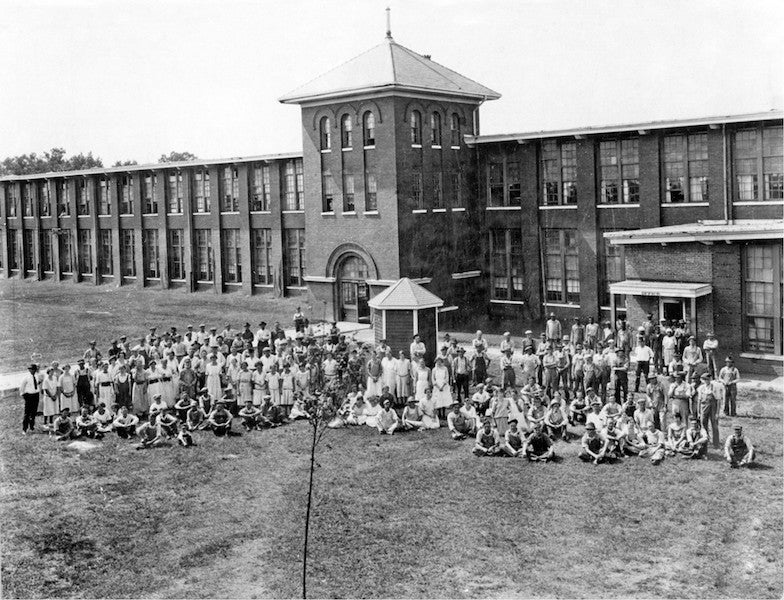Alabaster leaders are spearheading efforts to preserve the city’s historic Siluria Mill site.
One of the most iconic sights in Shelby County is the historic water tower that stands guard above the Alabaster City Hall and Senior Center. The history of this site celebrates the genesis of the community of Siluria, and later, Alabaster. With a grant partnership in place, the city is poised to preserve the water tower and surrounding area for future generations.
The Epicenter of Original Alabaster
Present-day Alabaster is now known as a thriving community centered around the “Medical Mile” that serves the health and wellness of many in Shelby County and nearby areas. However, a textile mill community called Siluria that existed on the current site of Alabaster’s civic complex is where it all began.
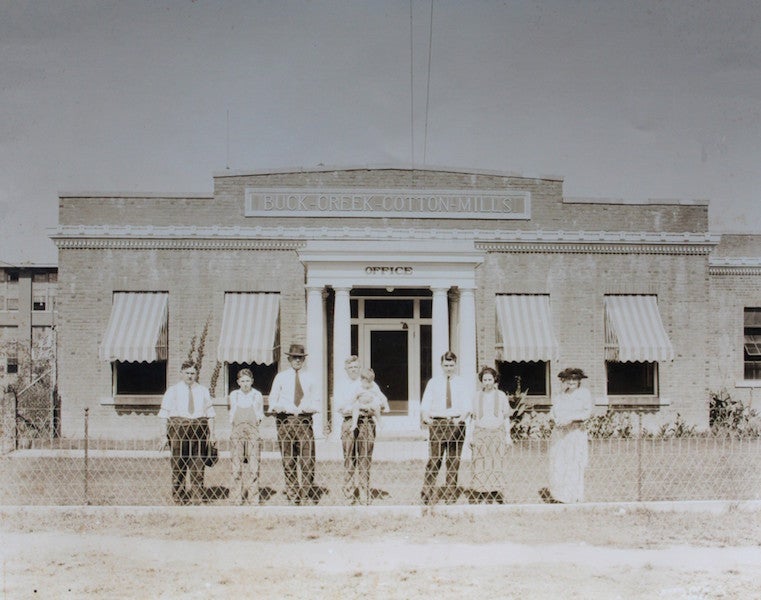
Named for the rock formations that were commonly found during the Silurian geological period, the Siluria Cotton Mill and company-built village was established in 1896 for textile production. Built along the banks of Buck Creek, the main section of the mill with its 75,000-gallon water tower was built in 1903-1904, with the main office section added in 1906.
Bobby Joe Seales, Alabama Bicentennial Ambassador and author of Alabaster & Siluria: The Early Years – A Pictorial History, describes the village as eventually covering about 305 acres of land. It boasted not only the cotton mill and outbuildings, but also a hotel, ballpark and clubhouse, doctor and dentist offices, churches, a school and nearly 120 cottage homes. Company stores provided various work opportunities for families to earn wages to provide for themselves. A small jail was eventually added behind the main mill building to increase the safety and security of the growing village.
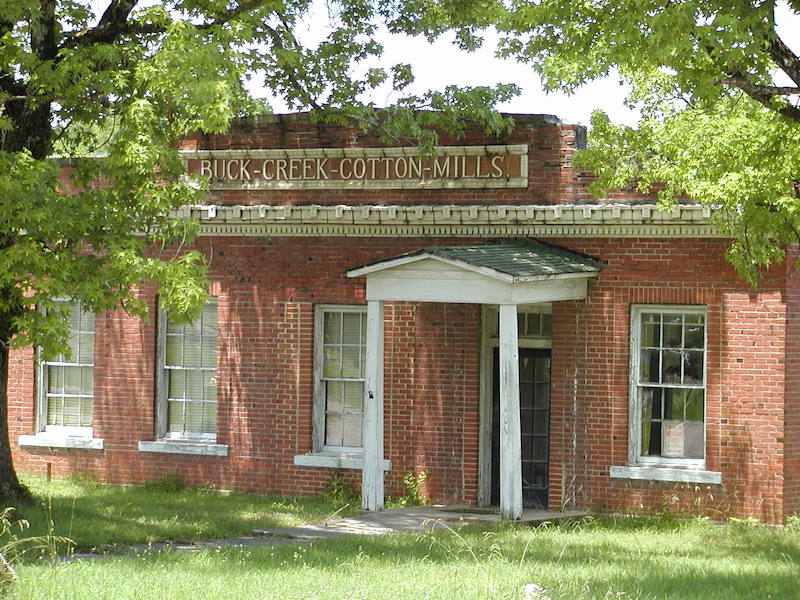
Braving the Storms of Time
The textile mill achieved about 45 years of steadily growing operations. However, after an April 18, 1953 tornado ripped through the community, the mill was shut down for almost a full year to make extensive repairs. The original water tower survived the storm, although it was decided to install more competitive, modern equipment elsewhere throughout the operation. Shortly thereafter, the mill and the entirety of the village property was purchased by J.W. Valentine Co., Inc. of New York.
“The name of the business was changed and this time it became Silura Mills, Inc.,” Seales says. “The final name of the business was changed in January 1965 to Buck Creek Industries, Inc., when the operating facility and factory site were sold to Reeves Brothers, Inc., a New York Stock Exchange.”

The End of An Era
One year after the community of Siluria was annexed by the city of Alabaster in 1971, the mill changed hands yet again. However, after another seven years, Buck Creek Industries, Inc. was officially shut down and its assets were liquidated.
“The Birmingham News, page 58, dated Thursday, May 10, 1979, ‘A textile mill which was once the largest onsite employer in Shelby County is closing its doors this week…’,” Seales points out.
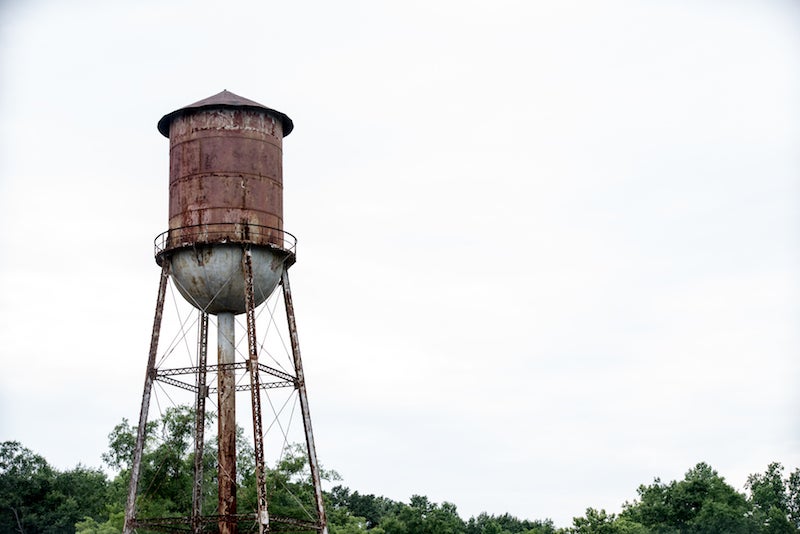
In 2003, the city of Alabaster purchased the defunct mill site and its surrounding 22 acres. By January 2008, after a demolition effort eliminated the remaining decrepit buildings, only the jail cell, water tower and former office building remained. One year later, it was decided to remove the structurally damaged office building, as well.
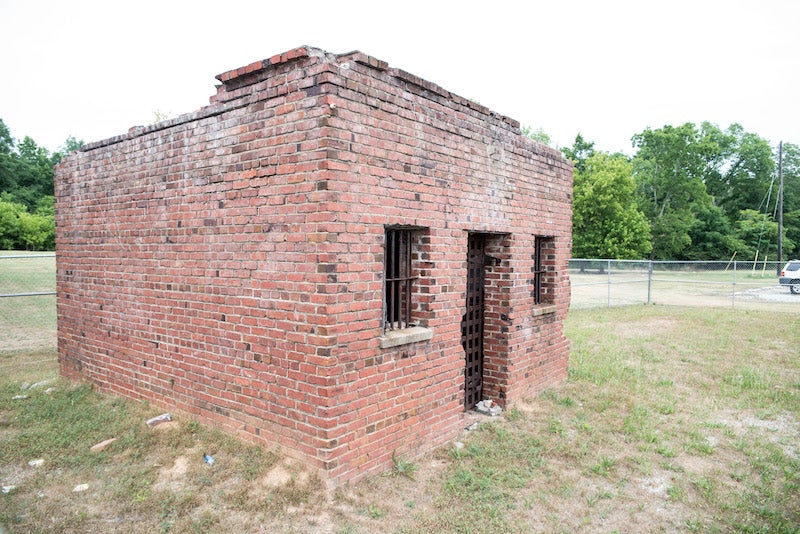
Preserving a Powerful Past
The Buck Creek Water Tower and Jail were recently listed in the Alabama Register of Landmarks and Heritage on March 29, 2018. The City of Alabaster’s application for this honor described the water tower and jail as “the last two remaining remnants from a bygone era marking the rich history of the Siluria Mill Village – the self-contained community which laid the groundwork for the Alabaster we know and love today.”
Through a grant partnership with the Alabama Bicentennial Committee, the city of Alabaster is now in the process of securing a historic marker, landscaping, new fencing and enhancing the landscaping of the area around the Silura mill water tower and jail. The city’s goal is to ensure the story of this landmark’s legacy continues, and its rich history is protected for future generations to enjoy.

